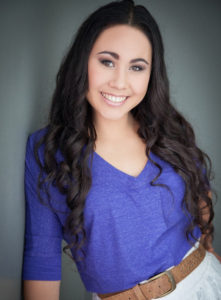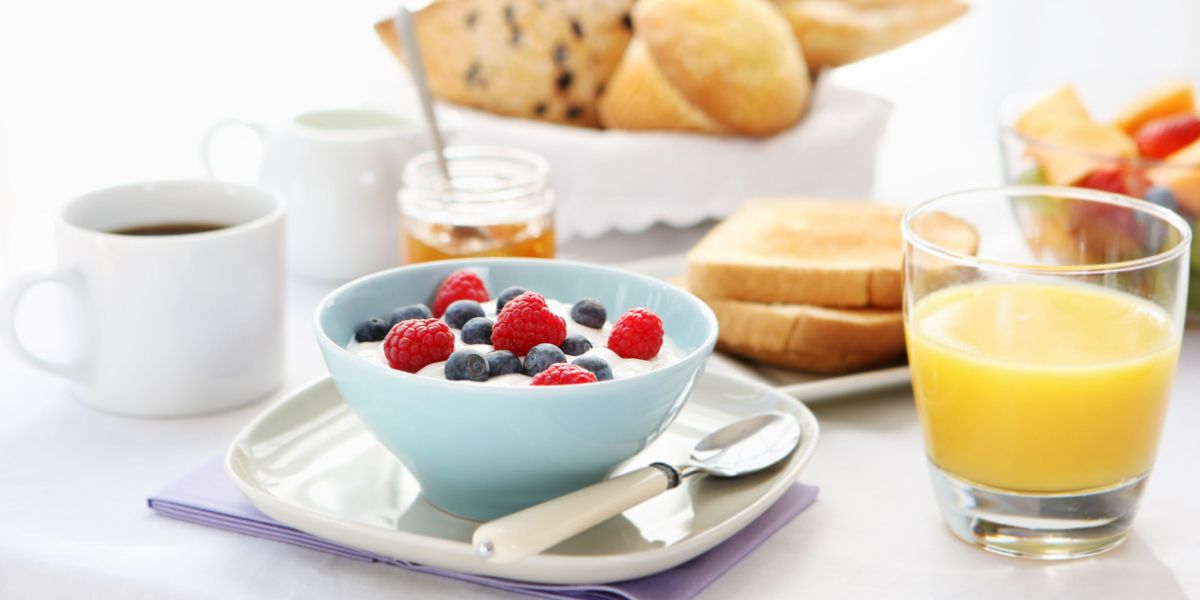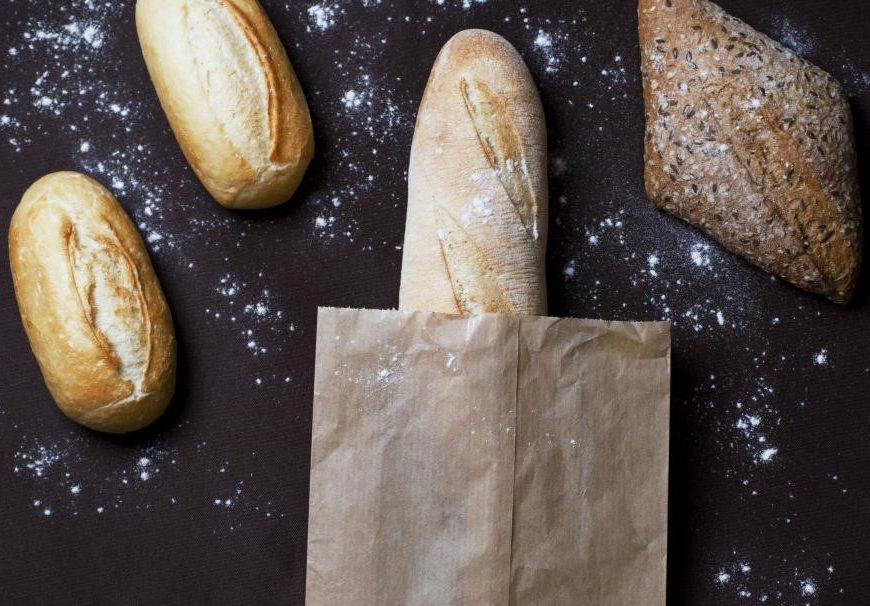- Freshly Squeezed Orange Juice
Would you eat 5 oranges? Not on a daily basis. But would you drink a large glass of orange juice? Easily done! They contain the same amount of sugar and number of calories but the juice doesn’t include any of the fibre. Fruit naturally contains fibre to slow the release of sugar into the bloodstream.
Nature didn’t intent for this fibre to be removed. Ideally, fruit should not be consumed in the form of juice. Fruit should be eaten whole or only added to vegetable juice to sweeten it so it is more palatable and pleasing to drink. If you drink fruit juice you are probably going to eat other fruit and sugar that day. This adds up to a lot of sugar in total! Fruit juice may quench your thirst, but it will not quell your hunger.
Fruit juice is an inefficient way to get your daily quota of fruit. It is recommended to eat two to three servings of fruit per day, equivalent to about half a glass of fruit juice. We know fruit juice rots our teeth so imagine what it does to our insides.
Just eat an orange.
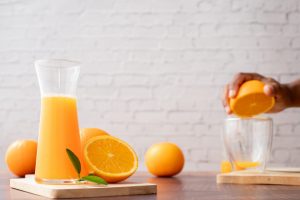
- Cereals
Have you heard the joke that the cardboard box is more nutritious than the cereal? Add a few teaspoons of sugar and a pinch of salt and you will nearly match the flavour and nutrition!
Just eat oats in the form of porridge or muesli.

- Fruit Yoghurt
Is usually low-fat yoghurt sweetened with ‘fruit’ flavouring (a.k.a. sugar) and sugar. This is a double whammy of sugar.
Full-fat or low-fat yoghurt (and dairy products)?
When fat is removed from milk, something must fill the gap. During the low-fat era (from 1977) when fat was removed from foods, it was replaced with sugar (carbs). If milk is higher in fat, it is lower in sugar. If milk is lower in fat, it is higher in sugar. The same goes for yoghurt. The sugar/carbs that fills the gap is lactose (milk sugar). This means that low-fat milk is even harder to digest than full-fat because it contains more lactose.
Dairy products are insulinergic, meaning they spike insulin more than other foods. When fat is present in dairy, it lowers the insulin response as fat slows digestion and the release of sugar into the bloodstream. Low-fat dairy is even more insulinergic than full-fat dairy. This is only beneficial after a hard workout or if you are training for a body building competition. The reason being that insulin is a storage/building hormone. If you have not been exercising, this storage will go to your adipose tissue (fat cells) rather than muscles.
Full-fat milk is also more filling due to fat being more satiating than sugar. You are likely to eat less dairy if you eat the full-fat version.
Full-fat milk is a source of the fat-soluble vitamins, A and D. Fat-soluble vitamins are found in foods containing fat and they require fat present for absorption.

- Protein Bars and Protein Cookies
These products are generally sugar-free, therefore, contain sugar alcohols or artificial sweeteners in-place of sugar.
Sugar alcohols (or polyols) include xylitol, maltitol, sorbitol, and erythritol. They do not act like alcohol in the body and cannot get you drunk. They are processed white powders made from corn, sugar, or waste products. Sugar alcohols also have a laxative effect and cause digestive upset in large quantities. Products containing sugar alcohols will have a warning on the back not to consume more than the recommended serving.
Artificial sweeteners can spike insulin even though they have no sugar or calories. In prehistoric times, sweet food was safe to eat so humans would devour it as they probably didn’t come across it very often. Sugar and calories always came as a combo deal (like a burger and fries), unlike now. Insulin will still be released in response to sweet food, and any sugar that is in our blood at the time will be stored in fat cells resulting in fat storage and low blood sugar. Low blood sugar can be to blame for cravings, tiredness, poor concentration, irritability, moodiness, and of course, being hangry. Not to mention that artificial sweeteners must be detoxed by the liver, putting an extra load on our poor liver. Diet Coke and Coke Zero aren’t much better (possibly even worse!) than the original Coke.
Natural sweeteners (e.g. raw Manuka honey, dates, pure maple syrup, coconut sugar, molasses, and stevia) aren’t used in high-protein products because they still contain calories and some sugar. The advantage of natural sweeteners is that they contain micronutrients and they are a lower glycaemic index (GI). While sugar is simply just sugar without any vitamins or minerals. Moderation still prevails with natural sweeteners, as with all foods.
Just eat chicken. Or meat, fish, eggs, legumes (lentils, chickpeas, beans), protein powders (whey, pea, rice), and lesser amounts are found in wholegrains (quinoa, millet, buckwheat, amaranth, brown rice, oats), nuts and seeds. These are all high-quality sources of protein.

- Tuna
Your can of tuna for lunch is not only smelly, it’s toxic.
Mercury is a toxic heavy metal found in amalgam fillings, plus tuna and other large fish. Tuna and large fish e.g. king mackerel, sword fish, orange roughy, shark and stingray, are larger fish which are higher up the food chain because they eat smaller fish. Each level up the food chain contains 10 times the amount of toxins. This is called biomagnification. Tuna and large fish should only be eaten occasionally, rather than a can for lunch every day. There are reports of mercury toxicity causing neurological damage from eating a can of tuna daily.
Just eat canned/smoked salmon, eggs, chicken, leftover meat from dinner, or plant-based protein for your lunch/snack protein source.

- Gluten-Free Products
Don’t eat gluten, but don’t eat ‘gluten-free’. Can you spot the difference? Gluten-free cake is still cake. Limit eating anything that states ‘gluten-free’ because that means it comes in a packet. Focus on foods which are naturally free of gluten (e.g. fruit, vegetables, nuts, seeds, wholegrains, legumes, eggs, dairy, seafood, and meat). Nature knows best.
The gluten-free alternative products e.g. bread, cakes, muffins and biscuits, have a higher glycaemic index and are lower in fibre than the gluten-containing version. Wheat flour is replaced with rice flour, potato flour, tapioca starch, maize flour, cornflour, guar gum etc. These are still all white flours so treat them as you would white flour. Choose the wholegrain/brown option where possible.
Check out my blog ~ All About Gluten-Free
Just eat foods naturally free of gluten, not gluten-free foods.

- Pre-Washed Salad Mix
Ready-to-eat salad.
Convenience meets health.
So convenient yet so healthy!
If it’s so convenient, ask yourself again, is it still healthy?
Pre-washed salad mixes aren’t just rinsed in water, because water on its own doesn’t deter bacteria. They use chemical bleach containing chlorine. Unless you’re bleaching and chlorinating your own salad at home, fresh is best.
Just wash your own salad.
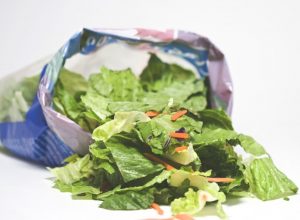
- Meat-Free Alternatives
Vegan and vegetarian food isn’t necessarily healthier. Meat-free alternatives are often highly processed to replicate the real deal. Let’s take tofurkey vs. turkey as an example.
Here are some ingredients that may be used in tofurkey: mycoprotein, water, onion, natural flavours from non-meat sources, refined rapeseed oil, rehydrated egg white, milk proteins. Contains 2% or less of potato maltodextrin, salt, tapioca dextrin, yeast extract, onion powder, sage extract, garlic powder, gum Arabic; sunflower, coconut and palm kernel oil.
Let’s compare this to the ingredients of turkey (without the gravy and cranberry sauce!): 100% turkey.
Most meat-free alternatives are made from soy. I highly recommend reading the book ‘The Whole Soy Story’ by Kaayla T. Daniel and check out my blog ~ Phytoestrogens – good, bad or evil? This is especially important for vegans/vegetarians because they are more likely to rely on soy as a protein source.
Just to give you an insight before you read the book, there are reports of babies on soy milk formula developing pubic hair and mini monthly bleeds (thought to be periods). Also, anecdotes of teenage girls transitioning to a vegetarian diet and their bra size increases 2-3 sizes in one week (similar to going on the pill). This reduces when they eliminate soy again from their diet. Not to mention moobs (man boobs) in men who aren’t even overweight.
Check out my blogs ~ All About Vegan and All About Vegetarian
Just eat real turkey (or real other food if you’re vegan/vegetarian).
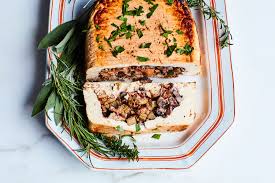
99% fat-free (a.k.a. 99% sugar). When the fat is removed from foods, flavour is also removed. Sugar and a bit of salt are added back in to fill the gap and improve the flavour. When a component of food is removed, something else must be added back in to fill the void. Otherwise it would taste like cardboard.
Fats are satiating, which stop us feeling hungry for much longer than carbs and sugar.
Healthy fats include avocado, olives, nuts (almonds, walnuts, Brazil nuts, macadamias, hazelnuts, pistachios, cashews, pecans, coconut), seeds (sunflower, pumpkin, chia, flax, sesame), eggs, meat, oily fish (salmon, mackerel, sardines, anchovies), and oils (coconut, olive, flax, avocado, macadamia).
They key difference between eating fat and carbs/sugar is that fat tells your brain that you are full while you are eating. Meanwhile carbs and sugar are notoriously late to the party. There is a delay in communication from carbs. This is why it is much easier to overeat carbs, compared to fat. They say it can take 30 minutes to feel full. This feeling happens instantly when you eat plentiful fat.
Just eat the full fat version.
Check out my blog ~ Does Eating Fat Make You Fat?
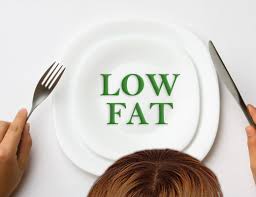
- Vegetable Oils
Should be called non-vegetable oil. People associate the word ‘vegetable’ with ‘healthy’ but these things claiming to be vegetables are hardly vegetables.
Vegetable oils include soybean oil, canola oil, corn oil, sunflower oil, cottonseed oil, peanut oil, rice bran oil, safflower oil, and vegetable oil (a concoction of any of the above). Margarine is made from these oils. These oils are the cheapest to produce and customers find them more appealing than lard or tallow.
It is funny when fish and chip shops have a sign outside saying ‘proudly cooked in vegetable oil’ yet it would be healthier if they cooked them in leftover dripping from their roast pork. This is because polyunsaturated fats are the most unstable for cooking. It is obvious not to cook with flax oil and fish oils (omega 3) but vegetable oils are hidden everywhere in our food supply.
The most stable fats for cooking are saturated and monounsaturated fats. There is nothing wrong with saturated fats. Vegetable oils, trans fats and hydrogenated fats are far worse (a small amount of trans fats naturally occur in animal foods but we are not talking about those ones, just the man-made ones).
Everyone needs saturated fats in healthy amounts. Coconut oil and palm oil are the only two significant plant sources of saturated fats. Coconut oil can hardly be bad, it has a multitude of health benefits. However, palm oil is generally not recommended due to the environmental effects of deforestation which impacts the habitat of orangutans.
The best oils for cooking are coconut oil, ghee, lard or tallow (smoke point 190 degrees), avocado oil (270 degrees), macadamia oil (232 degrees), and olive oil. The latter three are monounsaturated fats.
Ghee (clarified butter) is superior for cooking as its smoke point is 250 degrees celsius. Whereas butter is only 150 degrees. Ghee can easily be made by heating butter in a saucepan over a low-medium heat. The small amount of protein left in butter will float to the top in the form of white froth, skim that off. The traces of lactose (milk sugar) will burn on the bottom of the pan. You are left with the pure fat from butter, this is ghee.
By now you are probably thinking “what about olive oil?” Save your expensive extra virgin, cold-pressed olive oil (207 degrees) for salads and cook with virgin olive oil (210 degrees). The smoke point is really no different.
Just eat vegetables not vegetable oil, and switch all vegetable oils for coconut oil, ghee, lard, tallow, avocado oil, macadamia oil, or olive oil.
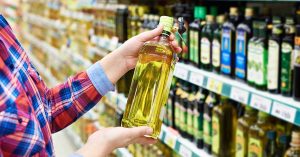
Please consult with me if your daily diet is currently freshly squeezed OJ. Cereal and fruit yoghurt for breakfast. A protein bar/cookie as a snack. A tuna gluten-free sandwich or tuna gluten-free pasta for lunch. Pre-washed salad mix with low fat salad dressing and a meat-free alternative cooked in vegetable oil for dinner.
If this is you, I recommend spring-cleaning your system with my Liver Detox Tonic and refer to my blog ~ Top 10 Tips to Detox Your Liver!
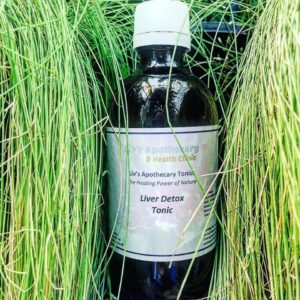
Check out my Blog ~ Healthy Meal and Snack Ideas
Your Nutrition Mentor,
